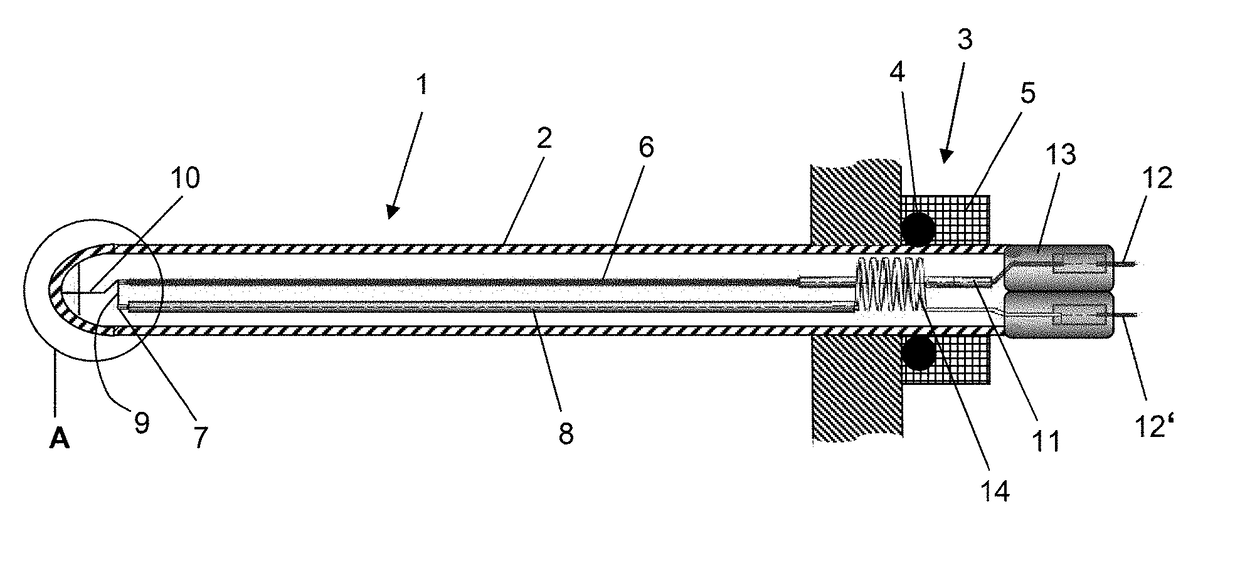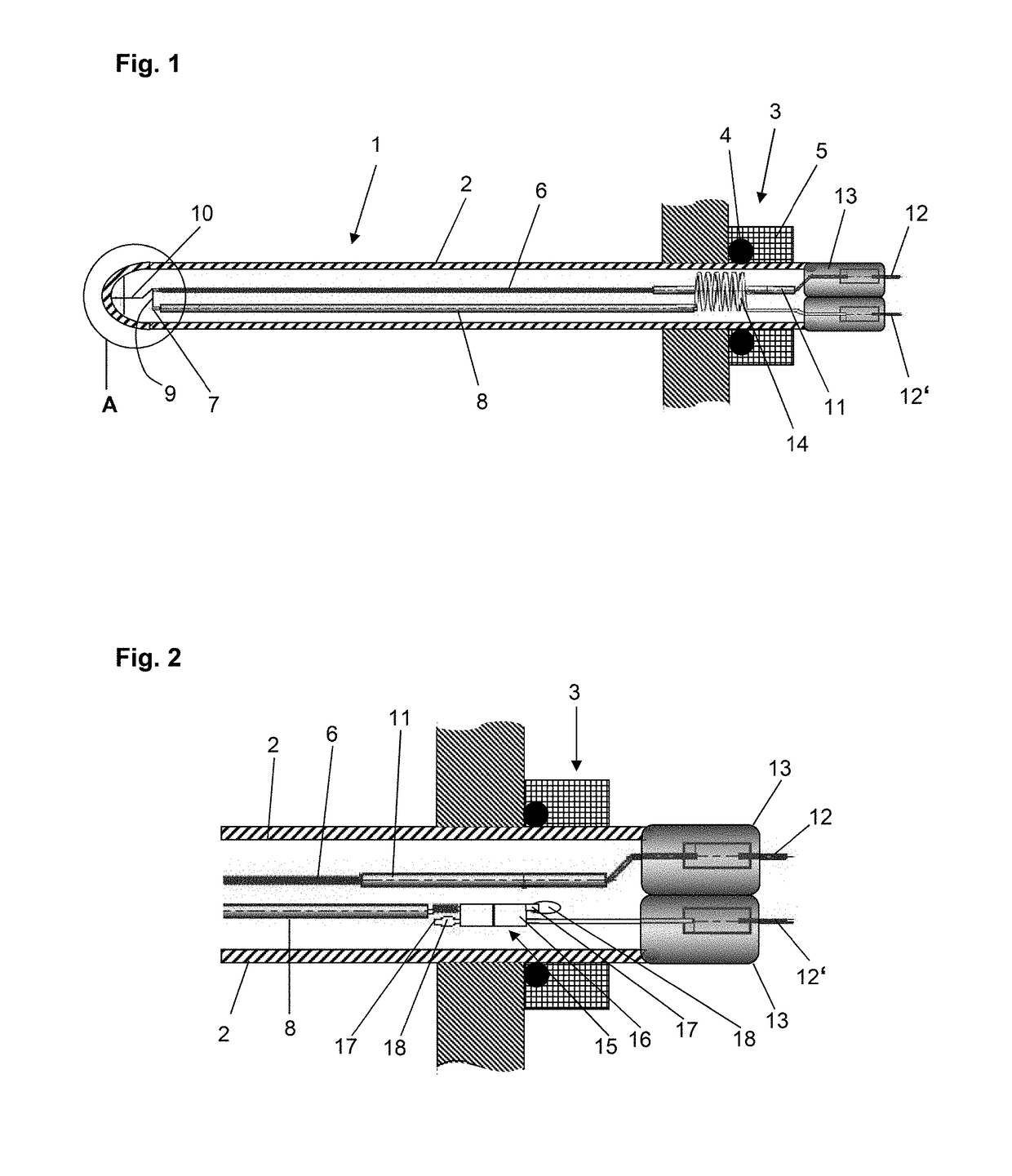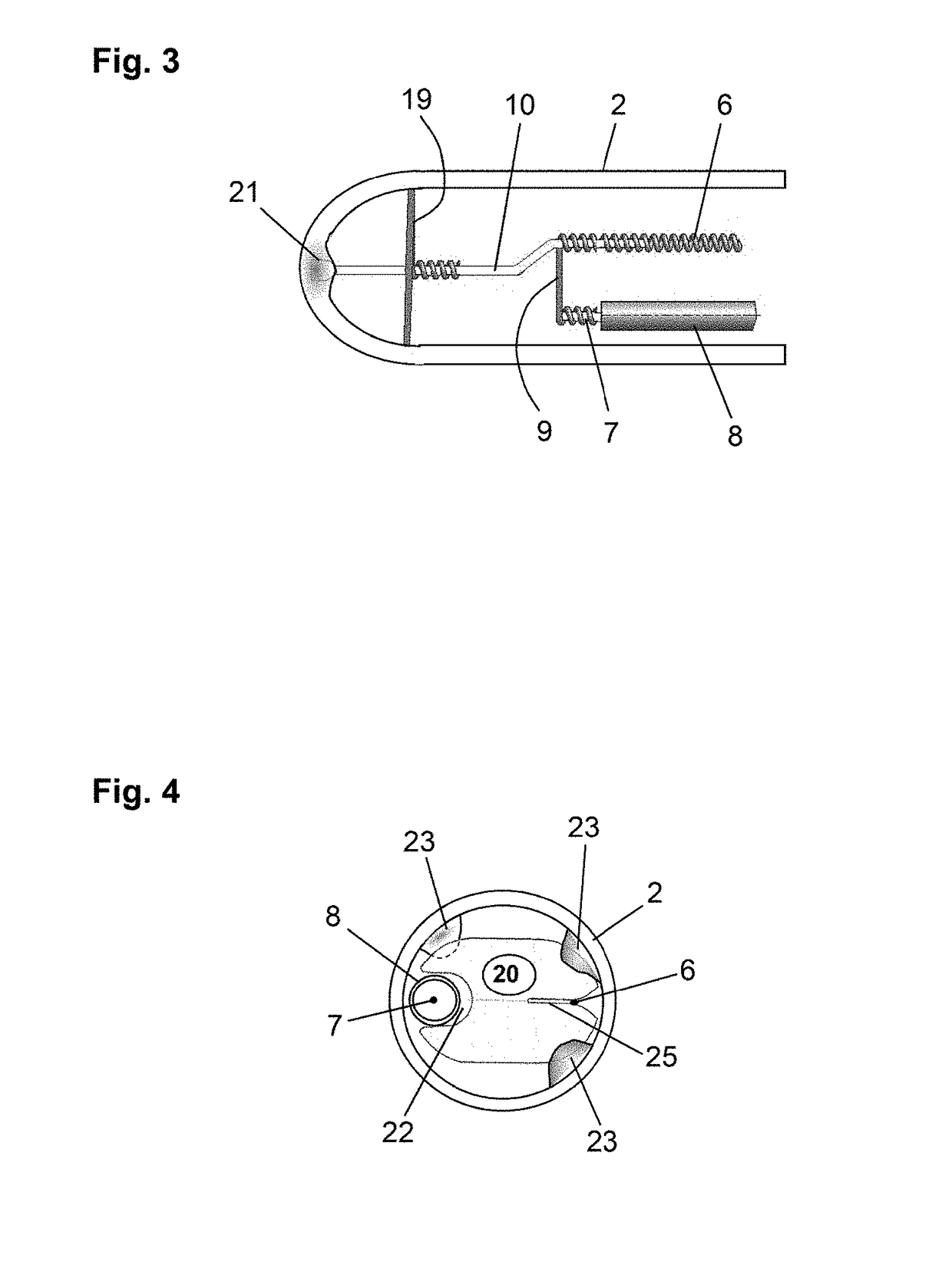Irradiation device for introducing infrared radiation into a vacuum processing chamber using an infrared emitter capped on one end
a vacuum processing chamber and infrared radiation technology, which is applied in the direction of leading-in conductors, electric heating, electrical apparatus, etc., can solve the problems of low operating power, high specific electrical resistance of tantalum, and high heat build-up, and achieve low thermal conductivity and low operating power. , the effect of excluding the risk of short circuit caused by twisting or sagging of the heating conductor
- Summary
- Abstract
- Description
- Claims
- Application Information
AI Technical Summary
Benefits of technology
Problems solved by technology
Method used
Image
Examples
Embodiment Construction
[0044]FIG. 1 shows schematically an infrared emitter 1 having an axial-symmetric emitter casing tube 2 made of quartz glass having round cross section (outer diameter 19 mm). The infrared emitter 1 is held by a vacuum feedthrough 3, which comprises a sealing ring 4 and a type of gland 5, in the opening of a vacuum processing chamber and projects with its closed end into the vacuum processing chamber. The IR emitter 1 is designed for an operating temperature above 800° C.
[0045]In the emitter casing tube 2 there is a coil-shaped heating conductor 6 (heating filament) made of tungsten having a (heated) length of 140 cm and a return conductor 7 (current return). The return conductor 7 is guided parallel to the heated area of the heating conductor 6 in a quartz glass tube 8. In the area of the closed end of the emitter casing tube 2, the heating conductor 6 and return conductor 7 are connected to each other by a short connecting piece 9. Furthermore, a support element 10 is located there...
PUM
 Login to View More
Login to View More Abstract
Description
Claims
Application Information
 Login to View More
Login to View More - R&D
- Intellectual Property
- Life Sciences
- Materials
- Tech Scout
- Unparalleled Data Quality
- Higher Quality Content
- 60% Fewer Hallucinations
Browse by: Latest US Patents, China's latest patents, Technical Efficacy Thesaurus, Application Domain, Technology Topic, Popular Technical Reports.
© 2025 PatSnap. All rights reserved.Legal|Privacy policy|Modern Slavery Act Transparency Statement|Sitemap|About US| Contact US: help@patsnap.com



